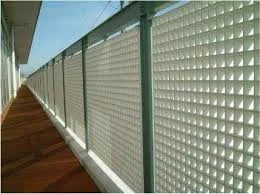
-
 Afrikaans
Afrikaans -
 Albanian
Albanian -
 Amharic
Amharic -
 Arabic
Arabic -
 Armenian
Armenian -
 Azerbaijani
Azerbaijani -
 Basque
Basque -
 Belarusian
Belarusian -
 Bengali
Bengali -
 Bosnian
Bosnian -
 Bulgarian
Bulgarian -
 Catalan
Catalan -
 Cebuano
Cebuano -
 China
China -
 China (Taiwan)
China (Taiwan) -
 Corsican
Corsican -
 Croatian
Croatian -
 Czech
Czech -
 Danish
Danish -
 Dutch
Dutch -
 English
English -
 Esperanto
Esperanto -
 Estonian
Estonian -
 Finnish
Finnish -
 French
French -
 Frisian
Frisian -
 Galician
Galician -
 Georgian
Georgian -
 German
German -
 Greek
Greek -
 Gujarati
Gujarati -
 Haitian Creole
Haitian Creole -
 hausa
hausa -
 hawaiian
hawaiian -
 Hebrew
Hebrew -
 Hindi
Hindi -
 Miao
Miao -
 Hungarian
Hungarian -
 Icelandic
Icelandic -
 igbo
igbo -
 Indonesian
Indonesian -
 irish
irish -
 Italian
Italian -
 Japanese
Japanese -
 Javanese
Javanese -
 Kannada
Kannada -
 kazakh
kazakh -
 Khmer
Khmer -
 Rwandese
Rwandese -
 Korean
Korean -
 Kurdish
Kurdish -
 Kyrgyz
Kyrgyz -
 Lao
Lao -
 Latin
Latin -
 Latvian
Latvian -
 Lithuanian
Lithuanian -
 Luxembourgish
Luxembourgish -
 Macedonian
Macedonian -
 Malgashi
Malgashi -
 Malay
Malay -
 Malayalam
Malayalam -
 Maltese
Maltese -
 Maori
Maori -
 Marathi
Marathi -
 Mongolian
Mongolian -
 Myanmar
Myanmar -
 Nepali
Nepali -
 Norwegian
Norwegian -
 Norwegian
Norwegian -
 Occitan
Occitan -
 Pashto
Pashto -
 Persian
Persian -
 Polish
Polish -
 Portuguese
Portuguese -
 Punjabi
Punjabi -
 Romanian
Romanian -
 Russian
Russian -
 Samoan
Samoan -
 Scottish Gaelic
Scottish Gaelic -
 Serbian
Serbian -
 Sesotho
Sesotho -
 Shona
Shona -
 Sindhi
Sindhi -
 Sinhala
Sinhala -
 Slovak
Slovak -
 Slovenian
Slovenian -
 Somali
Somali -
 Spanish
Spanish -
 Sundanese
Sundanese -
 Swahili
Swahili -
 Swedish
Swedish -
 Tagalog
Tagalog -
 Tajik
Tajik -
 Tamil
Tamil -
 Tatar
Tatar -
 Telugu
Telugu -
 Thai
Thai -
 Turkish
Turkish -
 Turkmen
Turkmen -
 Ukrainian
Ukrainian -
 Urdu
Urdu -
 Uighur
Uighur -
 Uzbek
Uzbek -
 Vietnamese
Vietnamese -
 Welsh
Welsh -
 Bantu
Bantu -
 Yiddish
Yiddish -
 Yoruba
Yoruba -
 Zulu
Zulu
chemical products for frp applications a comprehensive guide ...
Chemical Products for FRP Applications A Comprehensive Guide
Fiber Reinforced Plastics (FRP) have revolutionized the manufacturing and construction industries due to their lightweight, high strength, and corrosion resistance qualities. Applications of FRP span a wide range of sectors, including aerospace, automotive, civil engineering, and marine. The development and use of specialized chemical products play a critical role in the effectiveness and longevity of FRP materials. This comprehensive guide delves into the various chemical products tailored for FRP applications, examining their properties, uses, and benefits.
At the core of FRP technology lies the combination of fibers (commonly glass, carbon, or aramid) and a polymer matrix which binds the fibers together, providing structural integrity. The matrix material is often a resin that comes in several types, each suited for various applications. Among the most common resins used in FRP applications are epoxy, polyester, and vinylester resins.
Epoxy Resins Epoxy resins are renowned for their excellent adhesion, mechanical properties, and resistance to chemicals and environmental factors. These resins are ideal for applications that require superior performance, such as in the aerospace and automotive industries. They offer high tensile strength and low shrinkage upon curing, making them perfect for high-load-bearing applications. Additionally, epoxy resins can be modified with fillers or additives to enhance properties such as flame retardancy or thermal stability.
Polyester Resins Polyester resins are among the most widely used resins in the manufacturing of FRP composites, particularly outside the aerospace industry. They are cost-effective and exhibit good mechanical properties along with reasonable durability. Polyester resins are commonly used in the production of automotive parts, marine components, and architectural structures. The versatility of unsaturated polyester resins allows for easy addition of pigments and fillers, making them ideal for a variety of applications where aesthetics is important.
chemical products for frp applications a comprehensive guide ...

Vinylester Resins Vinylester resins derive their properties from the combination of epoxy and polyester. They provide enhanced resistance to corrosion and are particularly suitable for applications in chemical processing and marine environments. Vinylester resins are also favored for their toughness and resistance to stress cracking. These resins are often utilized in situations where long-term durability is critical, such as in storage tanks and pipes transporting corrosive substances.
Additives and Fillers To tailor the properties of FRP materials, various additives and fillers can be integrated into the resin formulation. Coupling agents can improve the adhesion between the fibers and the resin, enhancing the overall strength of the composite. Additionally, flame retardants can be added to ensure compliance with safety standards, especially in industries that handle flammable materials.
Curing Agents and Accelerators Curing agents, also known as hardeners, are essential in the cross-linking process that transforms liquid resin into a solid polymer matrix. The choice of curing agent significantly affects the curing time and final properties of the composite. Accelerators can also be used to speed up the curing process, which is particularly beneficial in large-scale production settings where time efficiency is crucial.
Conclusion The use of chemical products in FRP applications is vital for achieving the desired balance of strength, weight, and durability. Understanding the various types of resins and their associated additives ensures that manufacturers can select the appropriate materials for their specific applications. As industries continue to evolve, advancements in chemical formulations will undoubtedly lead to the development of even more efficient, robust, and sustainable FRP solutions. Whether for innovative aerospace components or durable construction materials, the realm of FRP is poised for continued growth driven by chemistry.









